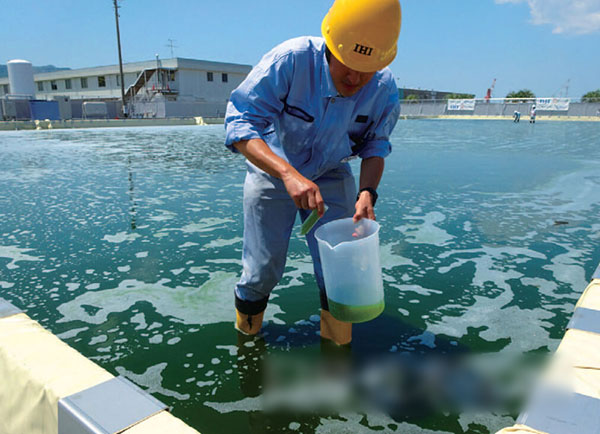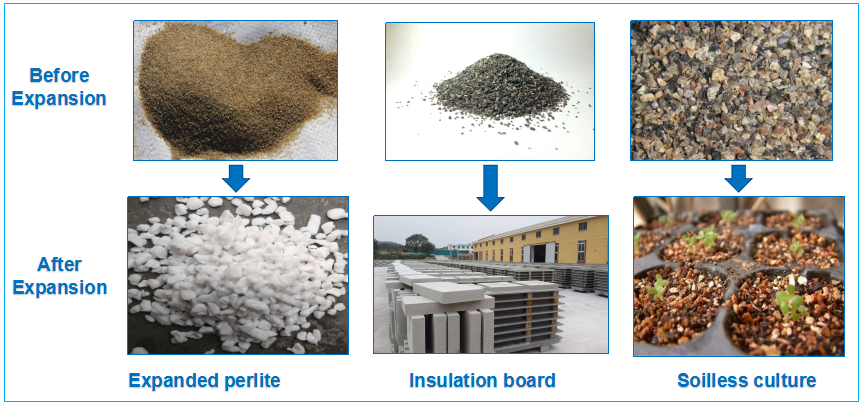 |
Research on the use of oil extracted from microalgae to produce biofuels is in full swing. Microalgae are not only not depleted, but also have many advantages, including reducing carbon dioxide and improving food supply and demand balance. In the future, we will overcome the problems of stable and large-scale training and realize practical application by 2020.
On May 21, 2015, the weather was fine. The bright sunshine shines on the 1500m2 outdoor culture pool located in IHI, Kagoshima City. The emerald green water ripples under the warm wind and there are countless bubbles floating on the water.
Ichi Saito, the director of the new business promotion department, said: "A lot of air bubbles appear, indicating that the algae are multiplying." The company cultivated a microalgae named Brown Brown Algae in the pond.
Microalgae, as their name suggests, are tiny enough to be visible with a microscope. This kind of microalgae is considered to “contribute to solving the problem of food shortage and energy shortage faced by the earth†and has now begun to attract the attention of global companies and research institutions. The reason is very simple, because this type of algae is the raw material for a new generation of biofuels.
Microalgae, like other plants, absorb CO2 (carbon dioxide) and water, and photosynthesis in the sun to generate nutrient-derived carbohydrates, while some algae can further produce fatty acids, hydrocarbons, etc., and store them in cells. Inside, this is the raw material for biofuels.
Raising raw materials for biofuels may first be reminiscent of corn or sugarcane. In the past, these "edible plants" were usually used to make biofuels. But it is clear that if food is turned into fuel, human food will be reduced accordingly. From the point of view that the global population will continue to increase in the future, new technologies must be developed that use plants other than food to produce fuel. As a result, microalgae began to receive attention.
There are other benefits from using algae as raw material. One is that oil can be produced efficiently. According to IHI, compared to oil palm fruit, which is also a raw material for biofuels, microalgae can produce 2 to 10 times more biofuel than the same area of ​​land.
Another benefit is that as long as there is sunlight and CO2, a culture pond can be built anywhere to cultivate algae. It is not suitable for dry areas and barren land where plants cannot grow, and can even be cultivated in the desert. Because of the absorption of CO2 emitted by factories, it can also contribute to CO2 emission reduction.

IHI and others use micro-algae cultured in facilities built in Kagoshima City
The ultimate goal is "jet fuel"
In recent years, Japanese companies that have begun to study algae cultivation techniques based on these advantages have emerged. IHI, which was mentioned at the beginning, cooperated with Kobe University, Chitose Institute of Bio-Risk Ventures, and Japan's New Energy Industry Technology Development Agency (NEDO) to launch a large-scale algae cultivation facility in Kagoshima in May 2015. In addition, companies such as bio-risk companies Euglena (Minato-ku, Tokyo) and Denso are also investigating the use of microalgae for the production of biofuels.
The oil extracted from algae, like crude oil, can be used for various purposes such as fuel and raw materials for chemical products. The ultimate goal the companies are aiming for is to supply "jet fuel" for aircraft use. The practical target time is to hold the Tokyo Olympic Games in 2020. People in the industry have stated the dream in unison, "I hope that we can use the biofuel-driven airplanes that are extracted from microalgae to welcome visitors from all directions."
So why are you targeting jet fuel? The International Air Transport Association (IATA), composed of large airlines, proposed the goal of reducing the overall CO2 emissions of the aviation industry by half by 2005 from 2005. In order to achieve this goal, an action plan to set a cap on the amount of CO2 emitted by aircraft by 2020 was also formulated.
Despite this, unlike airplanes, the development of alternative fuels has made little progress. Although "eco-cars" powered by electricity or hydrogen have been introduced, it is very likely that aircraft will continue to rely on liquid fuels with higher fuel efficiency. In other words, biofuels must be used to significantly reduce CO2 emissions. Companies have discovered huge business opportunities.
Let's take a look at the method of making biofuels from microalgae. It generally takes 5 processes. Were 1 large-scale cultivation of algae, 2 harvested from the water, 3 drying, 4 oil extraction, 5 refining. The dregs produced in 4 can also be used as livestock feed or solid fuels.
To extract biofuels, it is necessary to adopt a wide range of manufacturing technologies and experience. Therefore, many companies, like IHI, have cooperated with companies with advantages in various fields and established a development team.
Euglena announced in February that it will team up with Chevron Lummus Global to build a demonstration device for biofuels refining. In order to effectively use the oil residue of algae, Denso has also begun to explore with the feed companies the use of the oil residue as a fish feed.
Massive cultivation and harvesting costs are problems
In fact, the basic technology for making biofuels using microalgae has been established. Biofuels manufactured by Euglena have been used on shuttle buses at the Isuzu Motors Factory in Fujisawa, Kanagawa Prefecture.
The problem is "cost." The market price of jet fuel is “about 100 yen per litre†(I Qing Chengqing, Deputy Minister of New Business Promotion Department). Judging from the current production cost of algae fuels by Japanese domestic companies, taking IHI as an example, "even if the large scale of the current consideration is achieved, it will be about 500 yen." Denso also "has a large gap with the target price" (business planning and acting minister Miyuki Shinya).

Biofuels manufactured by Euglena have been used on Isuzu shuttle buses (Fujisawa City, Kanagawa Prefecture)
Some people may harbor such questions. "Even if you don't care, algae will grow. Why do you have to spend so much money?" There are roughly two reasons for the cost. One is "difficult to cultivate outdoors" and the other is "harvesting from the water is very troublesome."
Of course, it is not difficult to cultivate in a stable environment such as a dedicated container. However, in this case, the increase in algae production is very limited. Must be cultivated in large-scale facilities, but there is also a serious problem. That is, other algae and organisms can be mixed into the culture tank to cause "contamination". "This is also a frequent case where the algae that you want to cultivate disappear within a day, and the entire culture pool is occupied by other species of algae." (Director, Fukuda Yuki, Electric Basic Research Institute).
Harvesting algae from the water is also a big problem. As represented by the word "micro" in the name, individual algae are very small. Even if it can be filtered with a filter with a small mesh, it is very hard to dry. Although centrifuges can also be used, "if centrifuges are used to process algae collected from a large-area culture pond, it takes a lot of energy. If the energy consumption exceeds the amount of energy produced from algae, then there is no What does it mean?" (Chitose Institute CEO Fujita Tomokazu).
Different companies have different ways of solving these problems. The key lies in the "kinds" of algae. Companies have developed their own solutions based on the characteristics of different algae.
Denso chooses to cultivate an algae called Pseudochoricystis. This kind of algae has the characteristics like acidic. If the pH of the culture solution (hydrogen ion) is brought to almost the same level of acidity as yogurt, other algae and organisms will be difficult to survive, thereby reducing pollution.
IHI further improved the variety of algae that reproduces at a high speed and achieved the same growth effect as other algae. The solution to the problem of harvesting is to improve the collection of algae into a group of algae about 0.1 mm in diameter. In addition, algae have the property of being easily floated on the surface of the water, making it easier to harvest.
Petroleum has always been a leader in the global energy market. However, oil was also transformed from algae and other substances stored underground in ancient times. Unlike oil, microalgae can absorb CO2 emitted by factories or aircraft and can be regenerated many times. The tiny algae conceal the possibility of becoming a new type of renewable energy in the 21st century. Now, these algae are carrying the dream of sending huge planes to the sky one day and are being cultivated in some places. (Reporter: Yuki Sugihara, "Nikkei Business Weekly")
Perlite is an acid lava from volcanic eruption. After preheating and expansion, raw perlite becomes Expanded Perlite. After expansion, the volume of perlite will expand to several times or even tens of times of the original. The equipment used to expand perlite is called Perlite Expansion Furnace. Our company's Perlite Expansion Plant can be used not only for expanded perlite, but also for Expanded Vermiculite. Expanded perlite can be used for pearlite agriculture planting, plant soilless cultivation and so on.

Perlite Expansion Plant
Expanded Perlite,Perlite Expansion Plant,Expanded Perlite Production Plant,Industrial Perlite Expansion Plant
Henan Dianyan New EnergyTechnology Co. Ltd , https://www.cngasifier.com